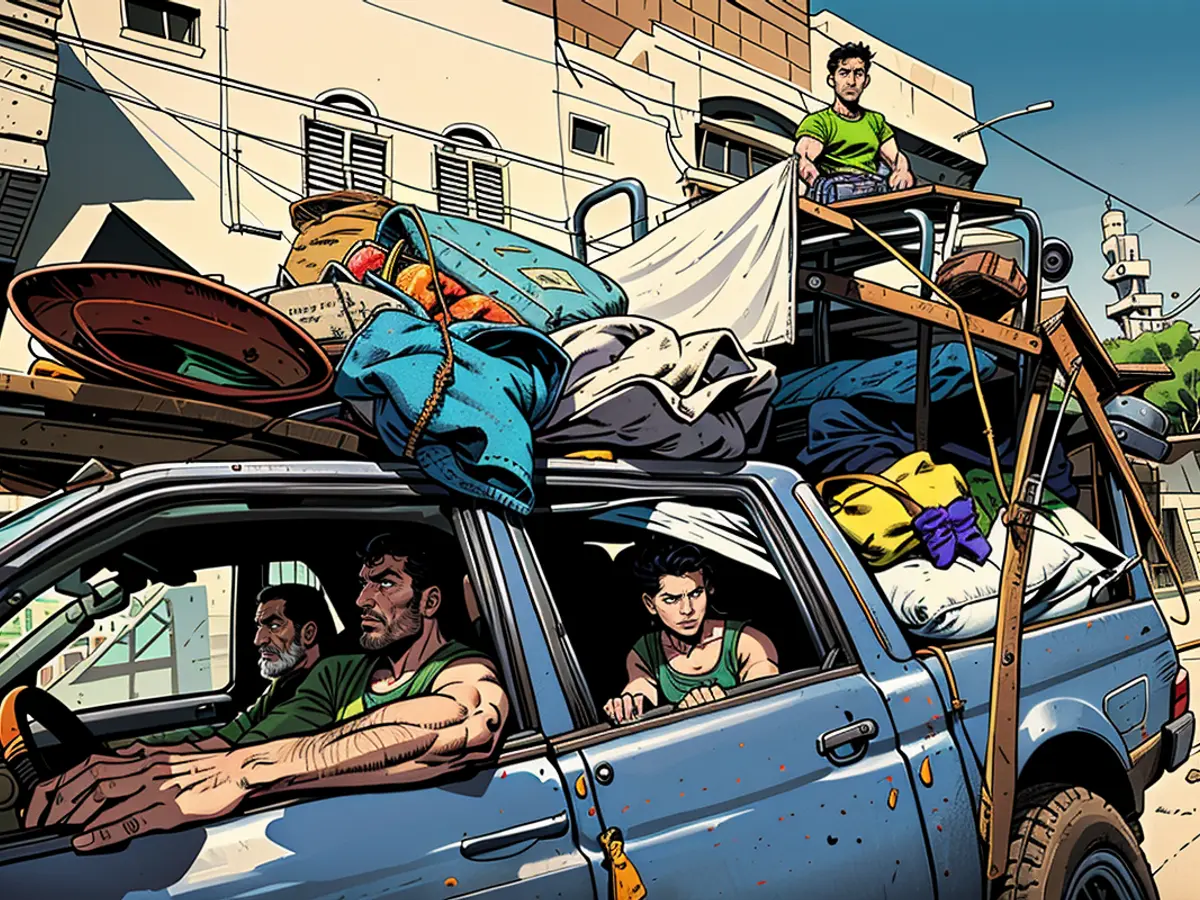Thousands are evacuating various areas in southern Gaza following the renewed evacuation notice issued by the Israeli military.
Folks were trekking or riding donkey carts as they departed regions east of Deir al-Balah. Some were traveling in personal vehicles, jam-packed with their belongings, such as mattresses, blankets, water containers, and gas bottles. The streets seemed strewn with flyers dropped by the IDF, reminding people of the evacuation order.
As per a CNN study, within the past month, the IDF has reduced the humanitarian zone in Gaza by 38%, issuing evacuation notices on July 22, July 27, August 16, and August 21.
This now equates to 39 square kilometers, barely surpassing 10% of Gaza's total area.
During this recent evacuation, the masses surged onto a UN aid truck, snatching tiny aid bags.
One of the fleeing individuals, Muhammad Awad, spoke to CNN: "There's been bombardment, shooting, and drone surveillance since this morning in the east of Deir al-Balah, so we have no choice but to leave. People are heading into the unknown. They have no clue. There was an order to evacuate."
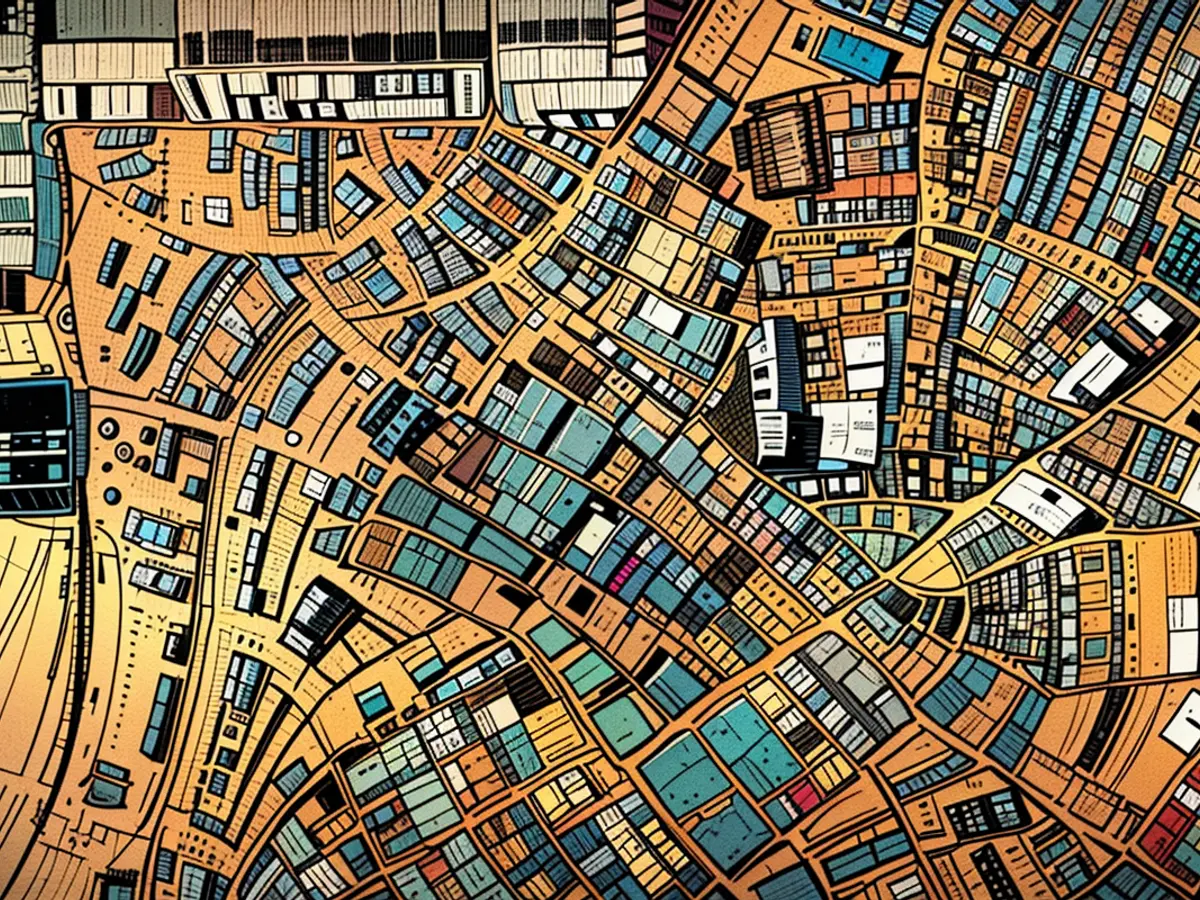
Recent satellite images secured by CNN from Planet Labs exhibit the multitude of Gazans who evacuated from areas that are no longer part of the humanitarian zone. Here's a look at the humanitarian zone near Qizan an Najjar before August 16. A lady named Um Alaa, seated on a cart, stated that this was the fourth time she'd been forced to evacuate since last October. "We have no idea where to go. We're just trying to find a safe spot away from this hazardous area. All of Gaza has become hazardous."
Some were panicking about what might ensue next.
An elderly man said, "There are no more options left. There were only Deir al-Balah, and now they are asking us to evacuate Deir al-Balah. I'm scared that tomorrow they will confine us all to the Deir al-Balah seashore, then eliminate us all."
"After so many displacements, we no longer have the energy to evacuate yet another time."
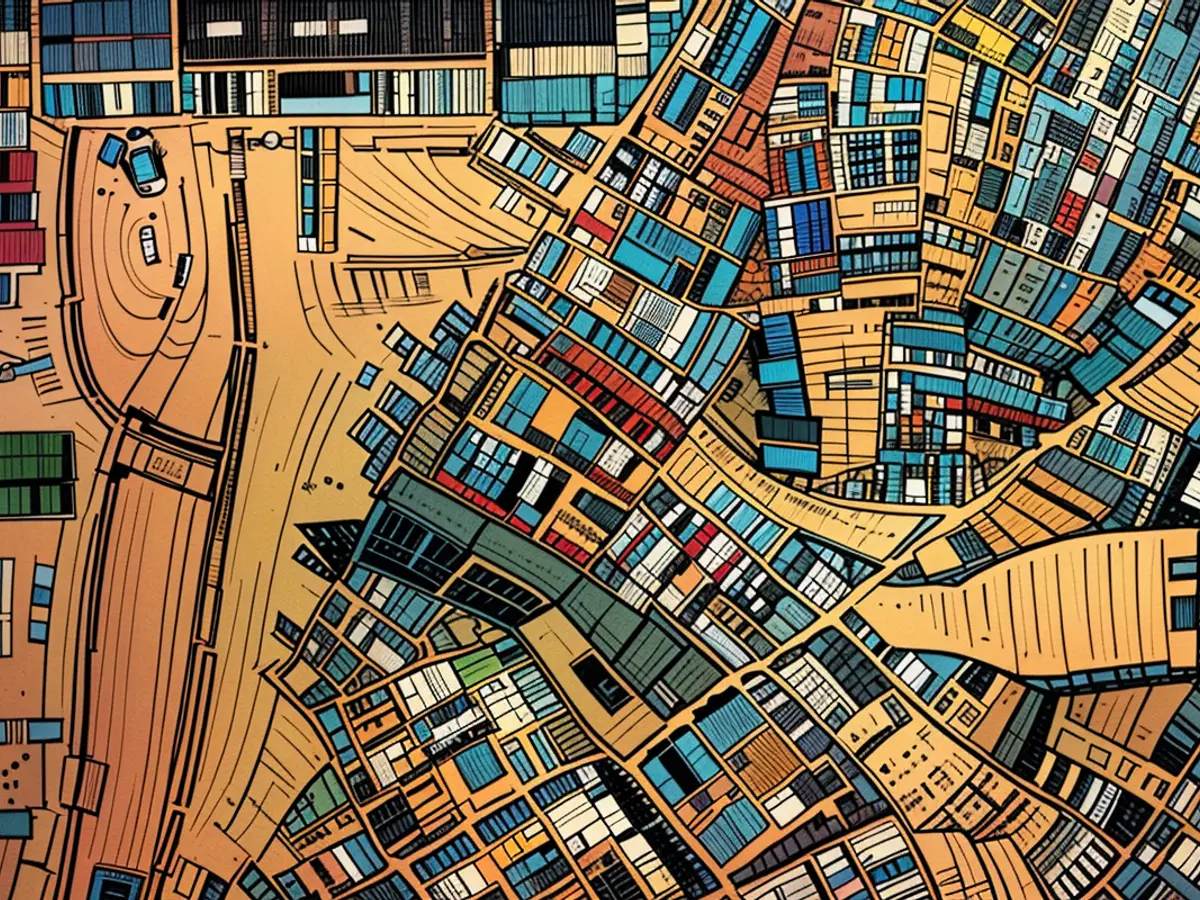
New satellite images obtained by CNN from Planet Labs shows just how many Gazans fled the areas that are no longer marked as being in the humanitarian zone. Above, the humanitarian zone near Qizan an Najjar before August 16.
Um Ismail, a woman with small children, declared that the people were helpless.
"Why are they attacking us? We are not Hamas, we are simply people staying in our homes. They've displaced us not once, but 10 times. Why? What have we done?"
A female passenger in the back seat of a car yelled, "Do you want to know what's happening – ask Hamas and the Israelis if you want to know what's happening to us."
Her family confirmed that this was their second displacement. For a tiny few, it was the first time they'd needed to relocate since the conflict began.
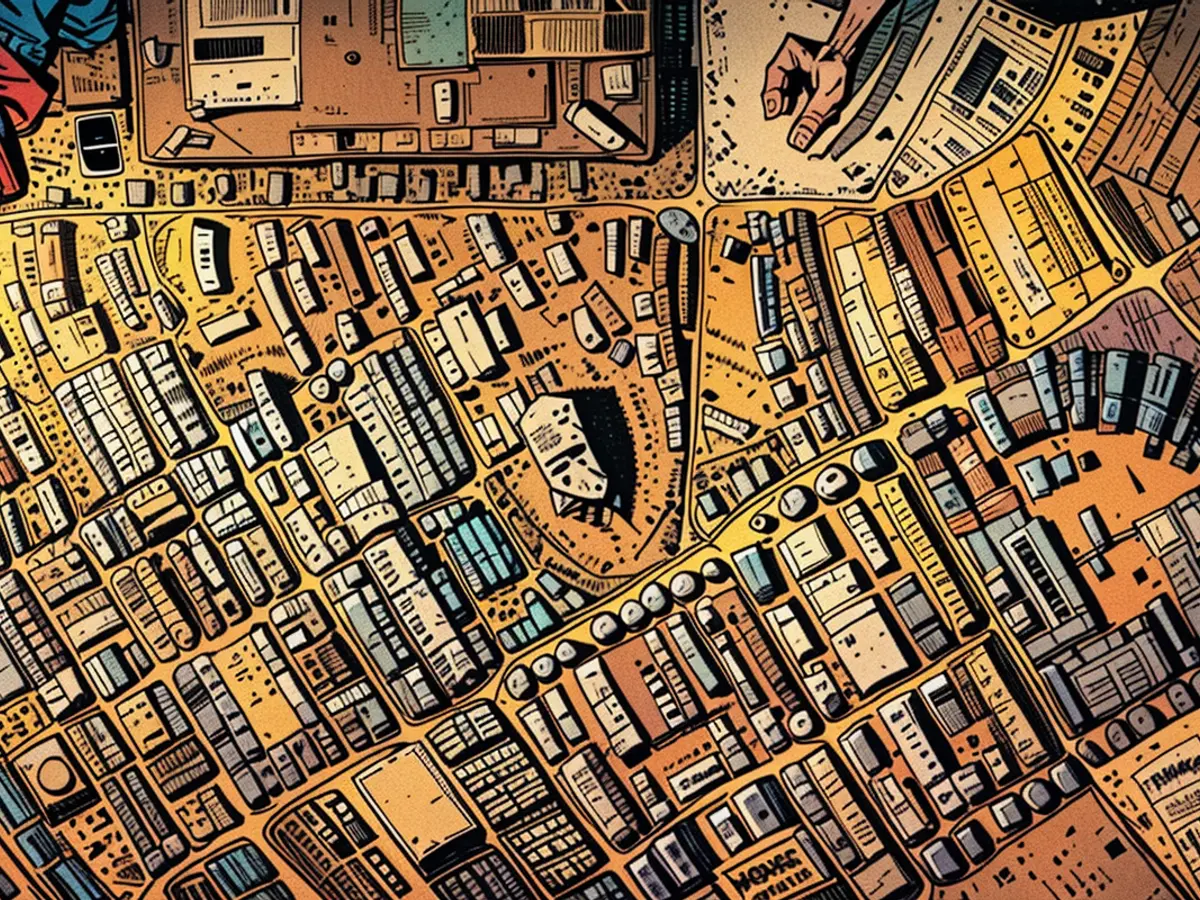
One man was sobbing while driving a car filled with women and children. "I have no idea where we're going. Anywhere we can stay. God save us. This is the first time I'm being displaced."
Recent satellite images secured by CNN from Planet Labs show just how many Gazans evacuated from areas that are no longer part of the humanitarian zone. Here's a look at the humanitarian zone near Al Qarara before August 7. But for Umm Said, this was the seventh move within just a few months.
"I don't know where I'm going. They told me to leave, so I left. We have no idea...Every time we find a spot and settle down, they tell us to go back. And here we are. I've taken some flour for the children, what else can I take with me!"
Abu Muhammad Hajjaj, a resident of Gaza City, had been displaced from the Shujaiya neighborhood.
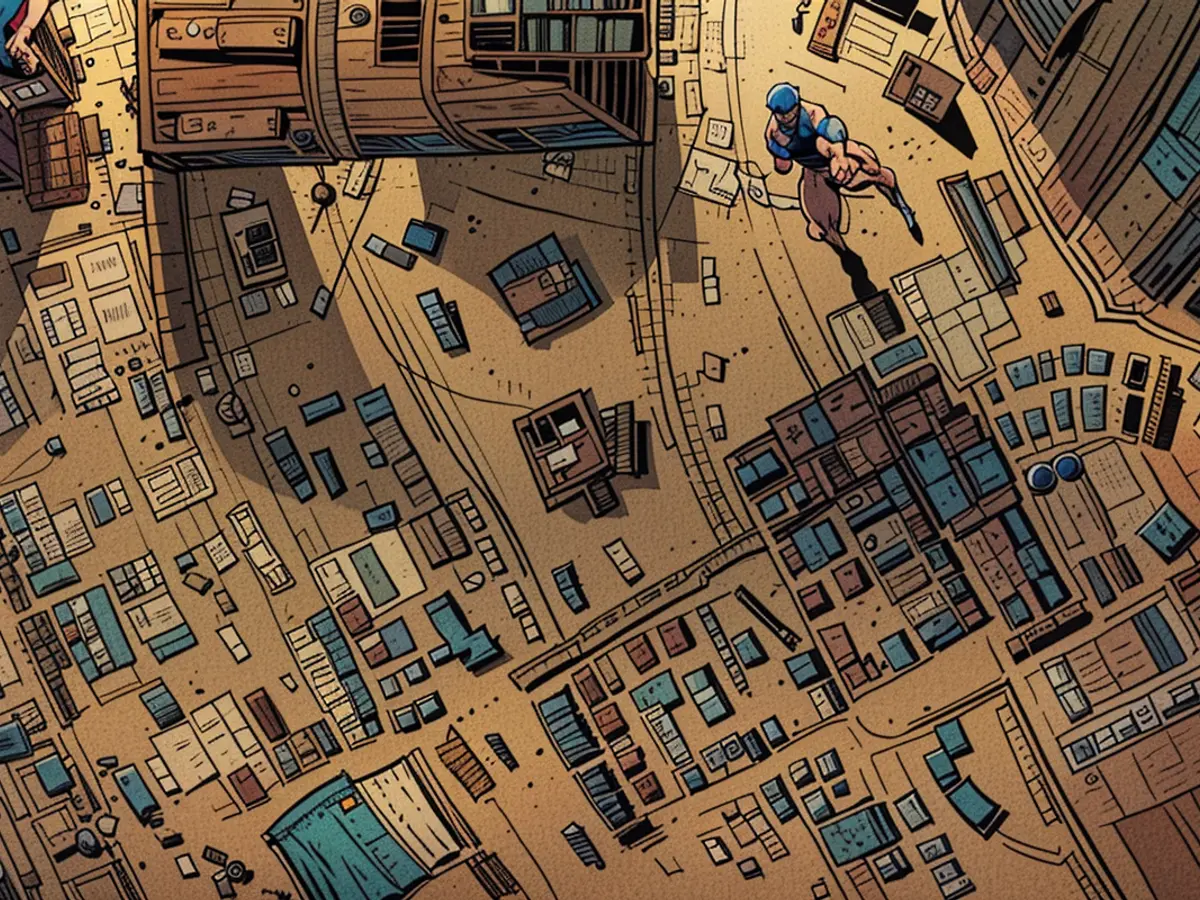
New satellite images obtained by CNN from Planet Labs shows just how many Gazans fled the areas that are no longer marked as being in the humanitarian zone. Above, the humanitarian zone near Al Qarara before August 7.
"We came here to our relatives in Deir al-Balah. Today, they have asked us to evacuate. We don't have any resources; we don't even have a tent to live in. We don't have the money to hire a car. We don't know where to go," he told CNN.
"People are crying and complaining about everything: disease, hunger, poverty, lack of hygiene, lack of medicine. You search the entirety of Gaza for paracetamol for a headache, and you can't find it."
Hajjaj added, "Find us a solution. This isn't a way to live. Where are the international organizations, where is the Security Council, where is the UN?"
"We don't have money. We don't have tents. We have nothing. We're not living in our own homes. We're on the street. They cannot keep on telling us to evacuate from here and there. This isn't a way to live."
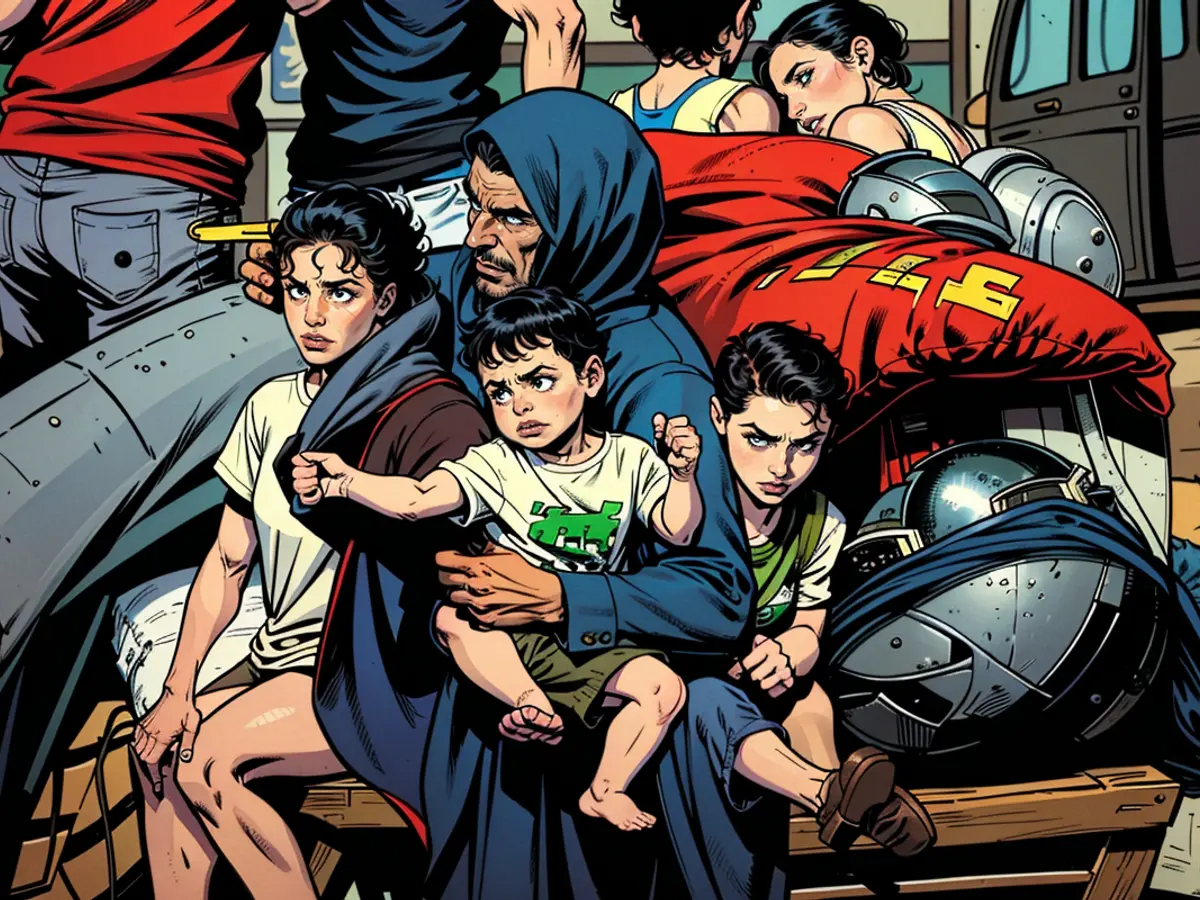
The international community is closely watching the escalating situation in the Middle East, with concerns growing about the displacement of civilians in Gaza. Despite making up a significant portion of the world's population, the people of Gaza are trapped in a cycle of evacuation and displacement, with little hope for a permanent solution.
